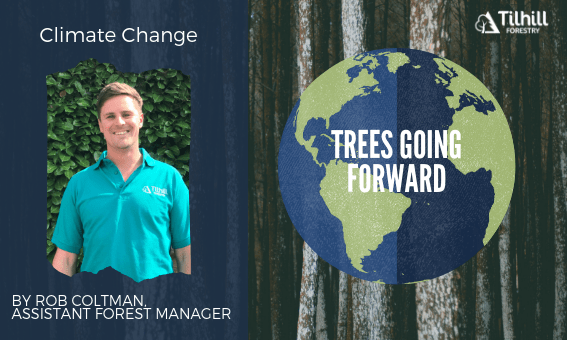There’s a quote that I’ve seen pop up from time-to-time on my internet meanderings that says something like: “Society grows great when old men plant trees whose shade they know they shall never sit in.” I can’t seem to find a definitive source for the quotation and the wording seems to change depending on where you look. However, the general theme across the quote/mis-quote is the same and can roughly be broken down in to these messages:
- Trees are good
- Trees take a long time to grow
- Trees require investment in the present for future gains
- Long-term sustainable goals are a good thing for society.
Those who work in the forestry industry may also wish to read into the “old men” bit, considering the ageing workforce and lower-than-average gender diversity. But rest assured, we’re working on these – and without a doubt an experienced forester is worth far more than a newbie like myself!
As foresters, we get to plant lots of trees. When doing so we are thinking about all the good they’ll bring in the future: economically, ecologically and socially. I think for many members of the industry this is one of the key reasons we chose to get in to this stuff in the first place. Increasingly in recent years though, we’ve been thinking about the effect of the biggest problem of our age: anthropogenic climate change.
In the UK, as in the rest of the world, climate change is projected to alter weather patterns and cause more frequent extreme weather events. The long-lived nature of trees makes them vulnerable to rapid changes in climate. The scientific evidence suggests that the east of the UK will become drier, making stalwart species such as Sitka spruce less suitable. The west is likely to become wetter – boosting productivity in some areas, but concurrently increasing the likelihood of pest and disease outbreak. It is our responsibility as forest managers to ensure forest systems are resilient to these changes.
But how can we do this? I personally feel tree species and provenance selection is at the heart of it. As the climate changes we need to plant trees that will suit that change. If we plant the right trees now, we have the best chance of productive and ecological continuity going forward. Tree genetics and species choice are key in building resilience and there are numerous groups across the UK seeking solutions.
Work has begun to produce UK nursery stock from provenances with similar climactic conditions to that of the projected future UK climate. Planting these trees allows their naturally developed genetic make-up to move in line with the rate of the changing climate. This technique can be used for native tree species from further south in Europe to stabilise woodland ecosystems for endemic wildlife, or it can be used to ensure the persistence of established productive non-native species.
Research is also being carried out in genetic modification of productive tree species. Studies undertaken by the likes of The Conifer Breeding Cooperative, Future Trees Trust and Sitka Spruced have made advancements in both growth rates and the drought resistance of key species. It has been said that genetics is the most rapidly advancing science of the 21st century. The application of research from this field will be key in building resilience in the face of rapidly advancing climate change.
Finally, novel species selection should be considered. We have a limited selection of native tree species in the UK compared with most other areas of the globe and an even more limited selection of productive ones. Our native woodlands create spectacular ecosystems for wildlife, though there is room to consider different species if they are found to be suitable for ecological and economic needs. There are a range of tree species being considered, promoted and trialled across the UK. The Royal Forestry Society have run various articles discussing novel species and encourage readers to trail them effectively. The Silvifuture network aims to pool knowledge from forest managers across the country about their successes and failures with new tree species. Experimenting and gathering this information will produce a valuable resource to help guide us forward in the task of building forests resilient to change.
So, to conclude, there’s efforts afoot by the old men (and everyone else) to do something about this. But it’s going to take a collective effort by all to step up to the greatest challenge we have ever faced. To sustain ourselves along with our fellow species we must make a change ourselves. For society to grow, the trees must grow. Forest managers can make choices about the trees we choose and what woods will flourish in the future. Let’s make them economically, ecologically and socially rich, let’s make them dynamic, and let’s make them resilient, so that future generations can enjoy their shade.



